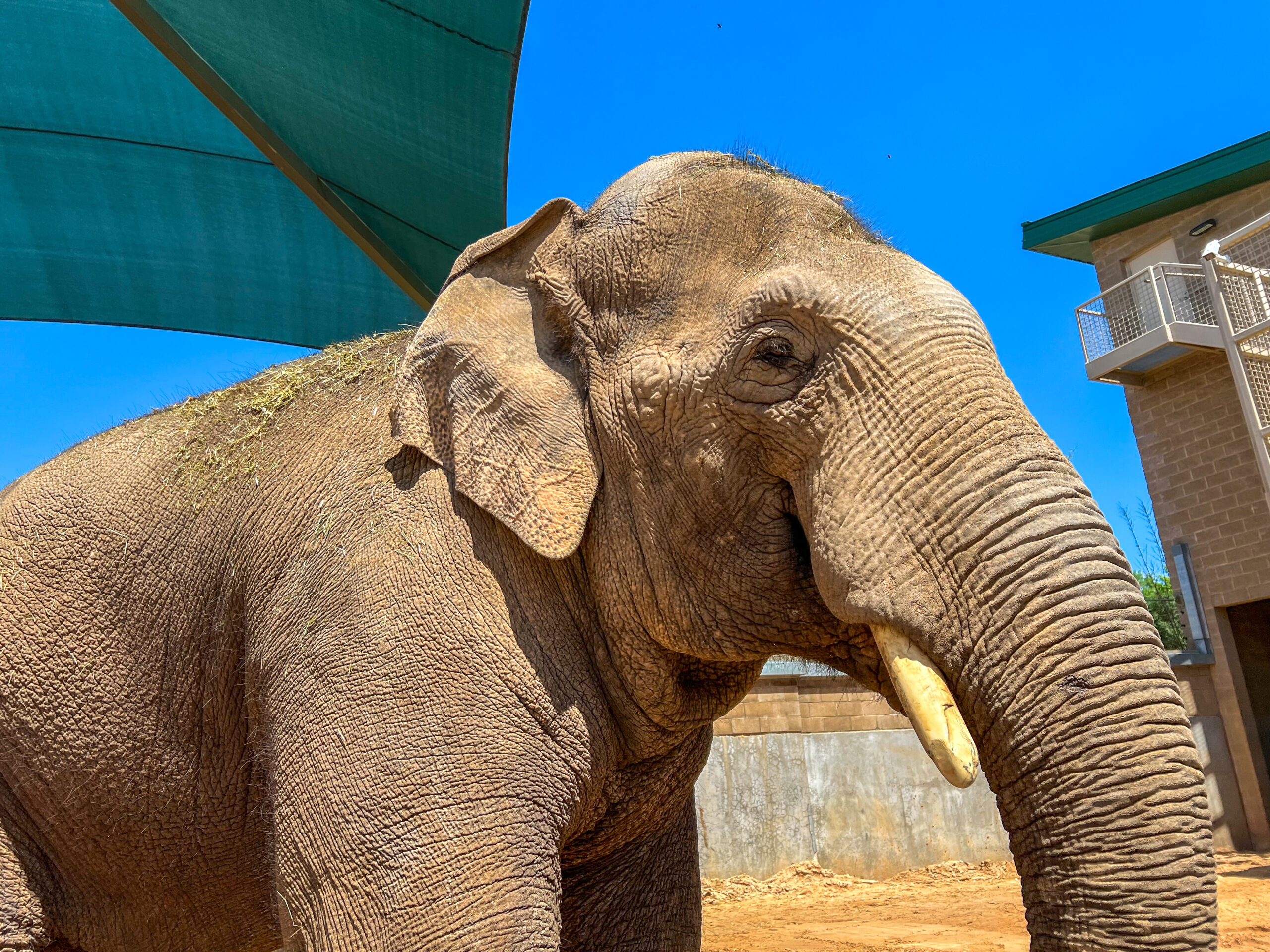Summary of Welcome Home, Chuck! – The Houston Zoo:
The Houston Zoo has introduced a new member to its Asian elephant herd, a 9,500 lb bull elephant named Chuck, born on July 15, 2008, at African Lion Safari in Ontario, Canada, and previously residing at the Denver Zoo. Chuck’s move to Houston was recommended by the Association of Zoos and Aquariums Asian Elephant Species Survival Plan®. Having spent six years with a bachelor herd in Denver, he is now joining Houston’s multi-generational herd, which includes elephants Thailand (58), Tucker (19), and Nelson (4). Visitors will soon have the opportunity to see Chuck in the zoo’s McNair Asian Elephant habitat, where he is expected to thrive due to his social, high-energy, intelligent, and affectionate nature.
The zoo’s care team ensures Chuck integrates smoothly with his new companions. Furthermore, supporting Chuck by visiting the zoo contributes to conserving bull Asian elephants in the wild. A part of zoo admission and membership fees supports efforts to protect around 250 wild elephants in Asia, including providing equipment, training, and support for Malaysian conservationists working near palm oil plantations. The initiative also involves replanting trees in Borneo to create forest paths for wildlife, with the zoo helping to replant more than 300,000 trees to aid in the conservation of Asian elephants in their natural habitats.
– Chuck, the bull elephant’s arrival at the Houston Zoo
– The role of zoos in conservation and education
– The intricate dynamics of elephant herds
– Modern zoo management and animal welfare
– Houston Zoo’s contribution to global conservation efforts
The Houston Zoo recently celebrated the arrival of a new member to its family, Chuck, a 9,500-pound Asian elephant. Born on July 15, 2008, at African Lion Safari in Ontario, Canada, and having spent six years with the Denver Zoo’s all-bachelor herd, Chuck’s move is a stellar example of the collaborative efforts within the Association of Zoos and Aquariums (AZA) Asian Elephant Species Survival Plan® (SSP). These efforts underline accredited zoos’ pivotal role in the conservation and survival of endangered species.
Zoos serve as modern arks of hope, embarking on a critical mission beyond entertainment: conservation, research, and education. By welcoming Chuck, the Houston Zoo adds to its multi-generational herd and educates the public about the plight of Asian elephants in the wild and the importance of conservation. The addition of Chuck to the herd, which includes elephants of various ages, offers a unique opportunity to study elephant behavior, social structures, and herd dynamics.
Elephant herds are complex social entities. Chuck’s integration into Houston’s herd at the McNair Asian Elephant Habitat requires a detailed understanding of elephant psychology and social behavior. This process is critical for ensuring the social well-being of Chuck and his new herd mates. By observing these dynamics, visitors gain insights into the natural behaviors and social interactions of elephants, fostering a deeper appreciation and understanding of these magnificent creatures.
Moreover, modern zoo management focuses on the well-being and mental health of the animals. This involves creating stimulating environments that mimic natural habitats as closely as possible, providing animals with opportunities for natural behaviors such as foraging, bathing, and social interaction. For Chuck, this means ample space in the McNair Asian Elephant Habitat, a complex environment designed to meet his physical and psychological needs, and the presence of other elephants for social interaction.
One of the remarkable aspects of the Houston Zoo is its commitment to global conservation efforts, demonstrating the instrumental role zoos can play in preserving biodiversity. A portion of each zoo admission and membership fee goes towards protecting wild elephants in Asia. The zoo’s initiatives help counteract the effects of habitat destruction caused by agricultural practices, such as palm oil plantations, by funding reforestation projects and supporting conservationists in Malaysia. By visiting Chuck and the other animals, guests contribute to the conservation of Asian elephants in their natural habitats, a powerful testament to how individual actions can have a global impact.
Through educational programs, personal encounters, and highlighting the stories of individual animals like Chuck, zoos facilitate a unique connection between humans and wildlife. This connection is vital for fostering empathy and driving conservation action among the general public. The compelling narrative of Chuck’s journey and integration into the herd at the Houston Zoo not only entertains but educates visitors about the significant conservation work undertaken by zoological institutions worldwide.
Chuck’s arrival at the Houston Zoo exemplifies modern zoos’ multifaceted role in conservation, education, and research. As guests eagerly await the opportunity to see Chuck in his new home, they contribute to a larger, global effort to protect and understand elephants. The partnership between the public, zoos, and conservation organizations creates a powerful force for change, highlighting the importance of collaborative conservation efforts in safeguarding the planet’s remarkable biodiversity for future generations. Through initiatives like the one demonstrated by the Houston Zoo, zoos continue to evolve as centers of conservation, education, and research, rallying the public support necessary for the survival of endangered species like the Asian elephant.


